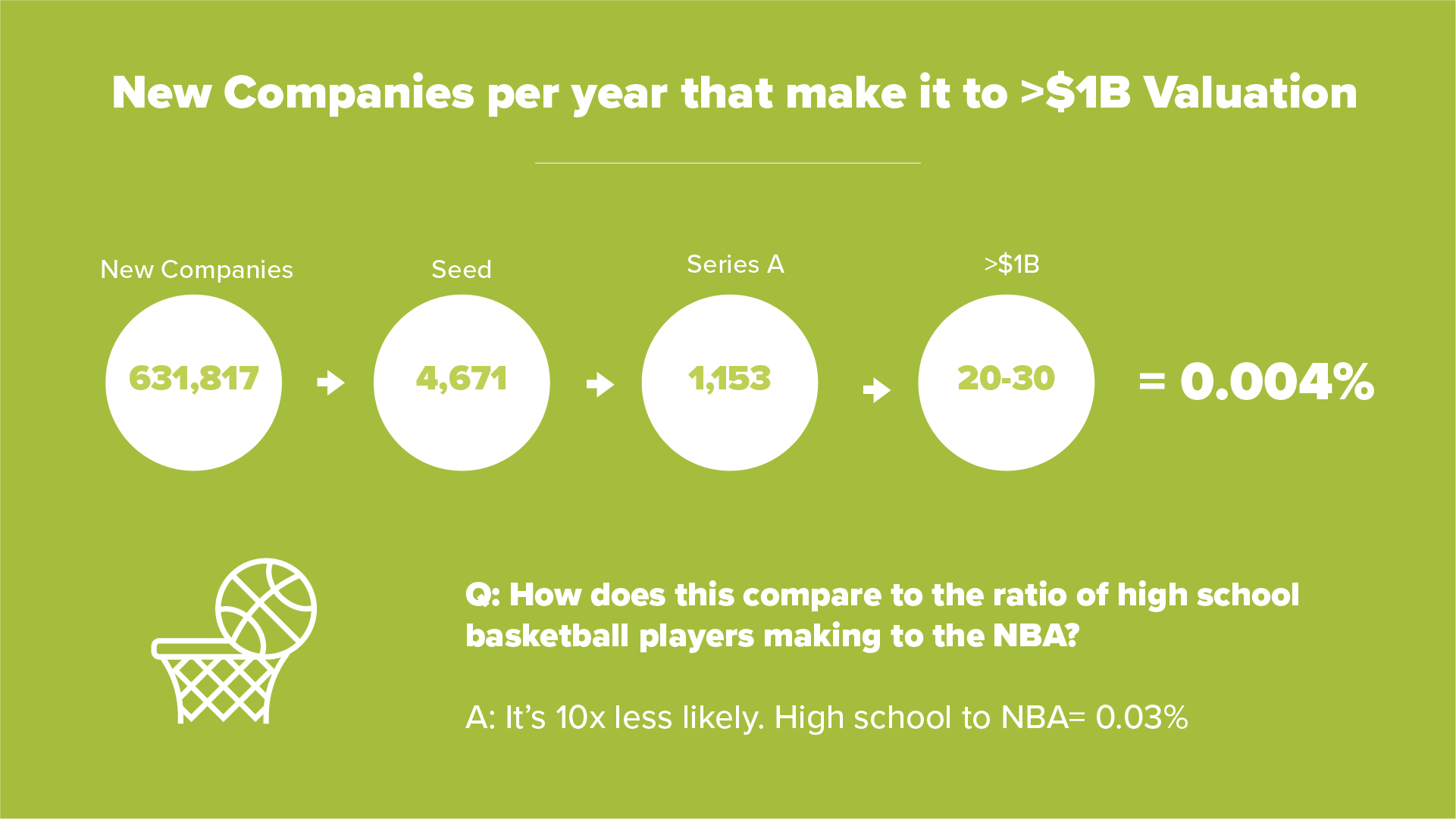
This post is Part 1 of our four-part series on What It Takes To Go from 0 to 1.
You may have heard that seed funds have grown significantly in the past decade, and that there are many more angel investors these days, plus incubators and accelerators.
While this is exciting, what it also means for you is that getting to Series A is harder than ever. That’s because the same VC’s from more than 10 years ago are still the only ones offering Series A financing.
Take for example, a fund like Accel. The number of Series A companies that they fund has remained more or less constant. But now, there are more startups graduating from incubators and seed funds—so there is more competition for Series A funding than there was 10 years ago.
To put it into perspective: if you consider 2012 numbers, 631,817 new companies were started. Of those, only 4,671 received seed funding. Then, only 1,153 made it to Series A. That’s 0.18%. If you were a high school hockey player, you would have a higher chance of making it to the NHL.
Moreover, the rounds themselves have shifted. The valuations of seed and Series A companies have (way) more than doubled in the last decade. This is because the companies that get funded are now older and farther along—meaning that the journey is also now longer.


Even with all this, we know that your goal as a founder is not merely to make it to Series A. You have ambitions to build a category-defining company. As you probably know, our world likes to refer to such companies as “unicorns,” defined as companies with valuations of at least $1 billion.
In 2012, there were only 22 unicorns—that’s 0.004%. Perspective again: that’s 10x harder than being a high school basketball player trying to make it to the NBA (where your odds are 0.03%).

The Startup Journey
Now, all these numbers are not to discourage you as a founder! We simply want you to know the reality of just how hard this journey is before you embark on it. We think you should know exactly what you’re getting into.
All that said, we’re committed to helping more founders get there, and we want to share what, in our opinion, it takes to do it.
As much as the funding landscape might have changed, the startup journey itself has not changed all that much in the last 10 years.

At 0, you are in the idea stage. We would call this the “pre-seed” stage.
At 0.5, you have a product that you, as the founder, can sell. We call this “seed.”
At 1, you have a valuable product that a team can predictively sell, without the founder.